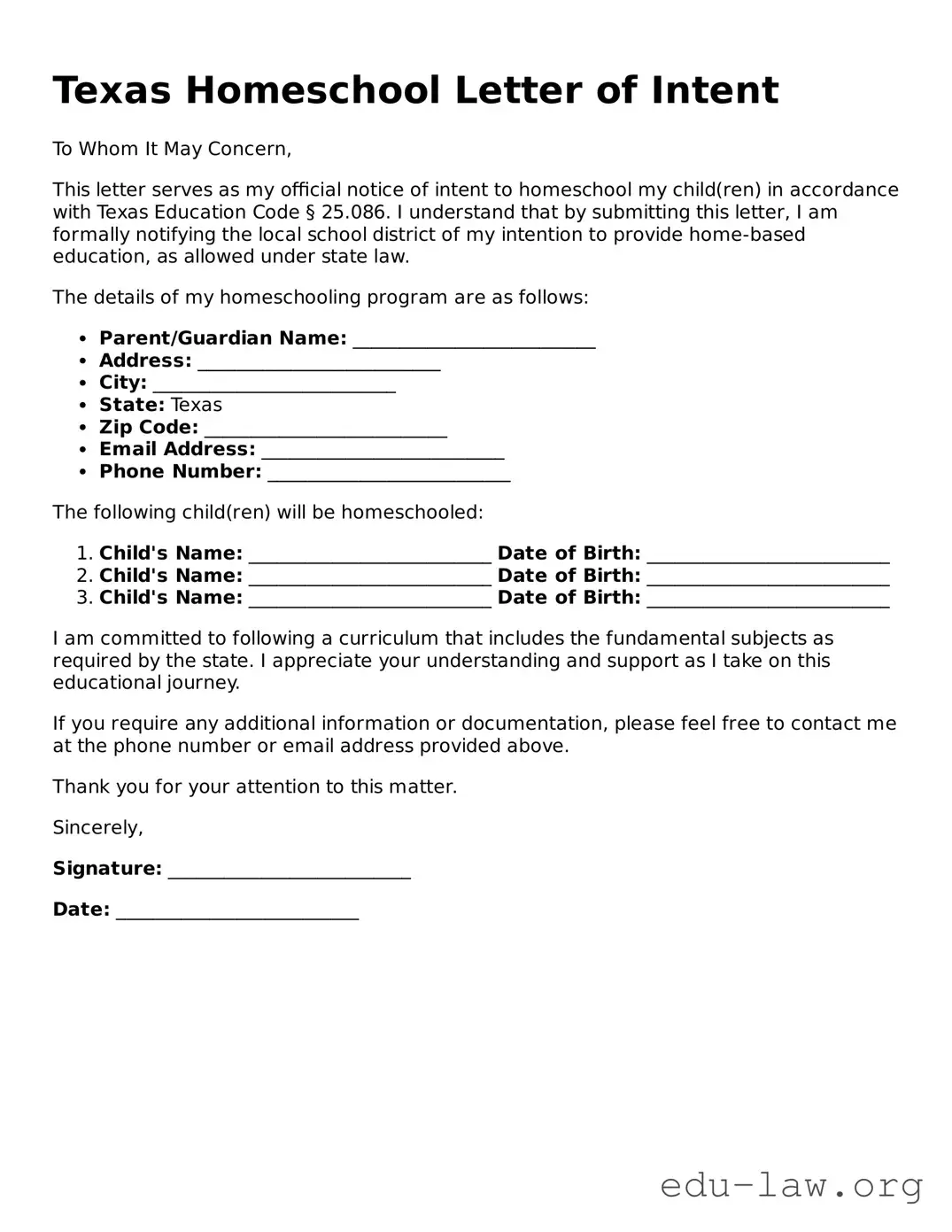What is the Texas Homeschool Letter of Intent?
The Texas Homeschool Letter of Intent is a document that parents or guardians use to formally request permission to homeschool their children. This letter notifies the local school district of your intent to provide home-based education, fulfilling your legal requirement under Texas law.
Who needs to submit the Letter of Intent?
Any parent or guardian intending to homeschool their child must submit the Letter of Intent. This includes families with children entering school for the first time or those who are transitioning from public or private schools to homeschooling.
When must I submit the Letter of Intent?
The Letter of Intent should be submitted at the start of the homeschooling process. Although Texas law does not specify a deadline, we recommend sending it before the school year begins or as soon as you decide to homeschool. This approach helps ensure clarity and compliance with regulations.
What information is required in the Letter of Intent?
The Letter of Intent typically needs to include your name, address, the name and age of the child or children being homeschooled, and a declaration of your intent to homeschool. While not mandatory, you might also want to include your educational plans or curriculum details for added clarity.
Do I have to submit the Letter of Intent every year?
No, you do not need to resubmit the Letter of Intent annually. Once it has been submitted, your intent to homeschool is established. However, if you decide to change your educational approach or transition back to public school, a notification to the school district may be required.
Is there a specific format for the Letter of Intent?
There is no required format for the Letter of Intent in Texas. You can draft it in any clear and understandable manner. Just ensure that all necessary information is included, and it is signed by you as the parent or guardian.
What if I forget to send the Letter of Intent?
If you forget to send the Letter of Intent, you should submit it as soon as you remember. While missing the submission could raise questions from the school district, prompt communication can often resolve any issues. Most districts prefer cooperation over enforcement.
Can I withdraw my child from homeschooling at any time?
Yes, you have the right to withdraw your child from homeschooling at any time. If you choose to enroll your child back into a public or private school, it’s good practice to inform the school district about your decision to ensure a smooth transition.
